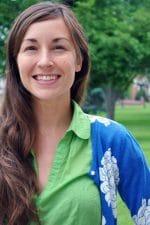This week we focus in on the many plants of our region, specifically endemic and culturally sensitive plants.
 |
| Wildflowers in northern Arizona - photo by Lawrence Busch |
As we all know the Colorado Plateau region is truly a special place, but one of the things that defines our area being so special is that we have the most endemic plants of any region in the US. And for those that might not know, endemic means that those species are found here and nowhere else. Some would argue that this fact is due to the huge size of the Colorado Plateau, spreading across four states and many sovereign tribal nations, but it is actually due to the environmental complexity that we have ranging from the alpine tundra to the high deserts as well as all the important stresses that these plants face in often harsh conditions, leading to the evolution of many new and distinct species. Biologists and other researchers have documented more than 3,000 vascular plants here on the Plateau, and of those 3,000 plants, 10% of them are endemic, and that is a very big number.
 |
| Sara Souther (NAU) |
Sara and I also discuss her roots as a forager in West Virginia, the plight of the American Ginseng plant, and the importance of exploring the relationship between the plants and the people who utilize wild food, medicinal and culturally sensitive plants, and what that relationship can say about these communities themselves.
Also the mystery of the recent Juniper tree die-off all around the Plateau region, specific threats to endemic plants of our area, and local music by Sap Dabblers, Tha' Yoties, Sihasin and more!
Further Information and Reading:
Sara Souther's ResearchGate (links to research papers by the guest)
iNaturalist - Tribal Nations Botanical Research Collaborative
Further Information on Species mentioned by Sara Souther and the Host:
American Ginseng
Coyote Tobacco
Emory Oak
Blue Grama
Jones Cycladenia
Kachina Daisy
Utah Juniper
One-seed Juniper




